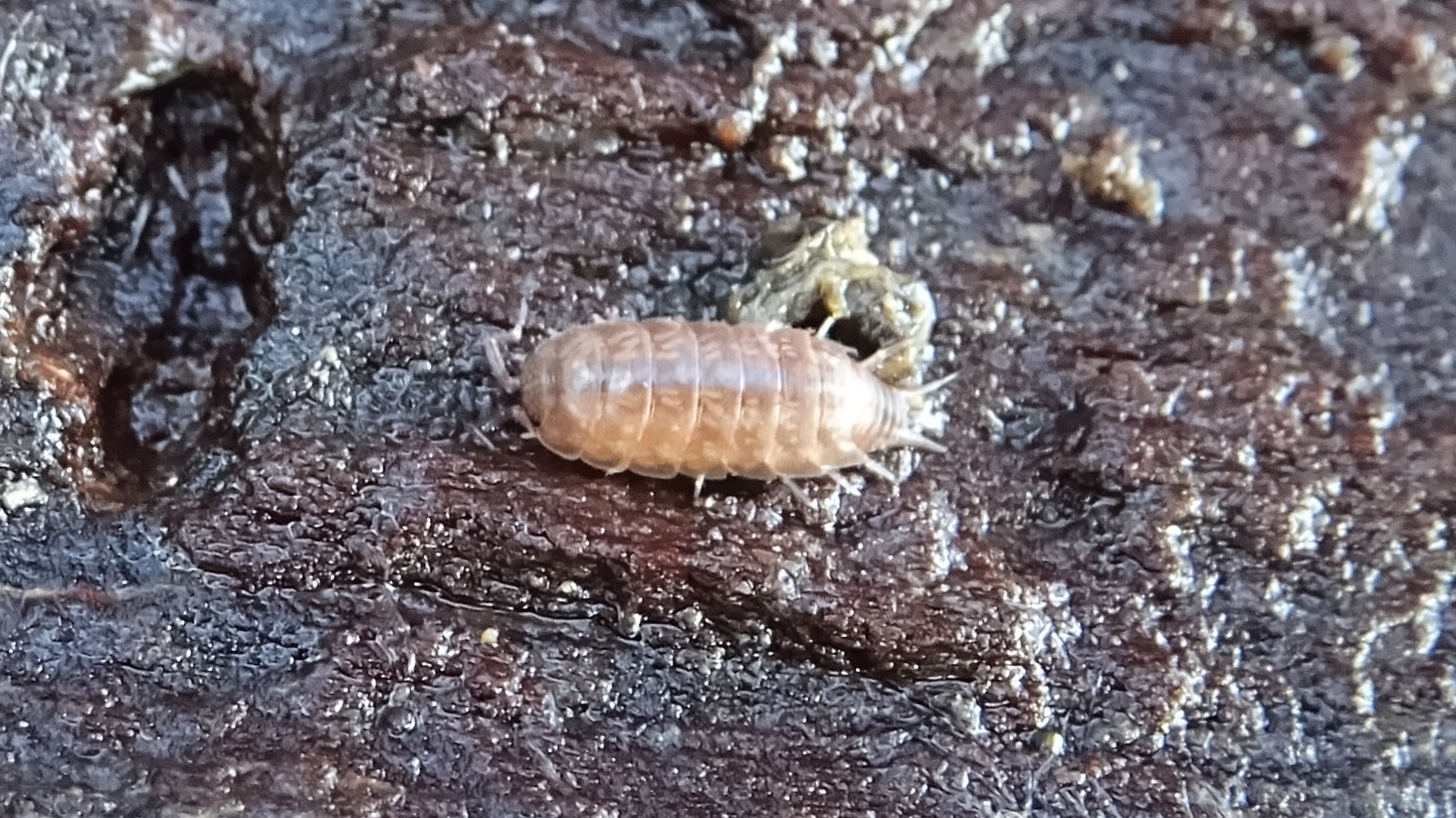Crustaceans are invertebrate animals that have a hard exoskeleton, segmented body, and jointed limbs.
Common Shiny Woodlouse
Oniscus asellus
A large species usually found under logs and in leaf litter. It is brown, glossy, with pale markings, and up to 16mm in length. Woodlice mostly feed on decomposing plant debris. Being vulnerable to drying out they normally hide in damp places during daytime and become active at night. They have seven pairs of legs.
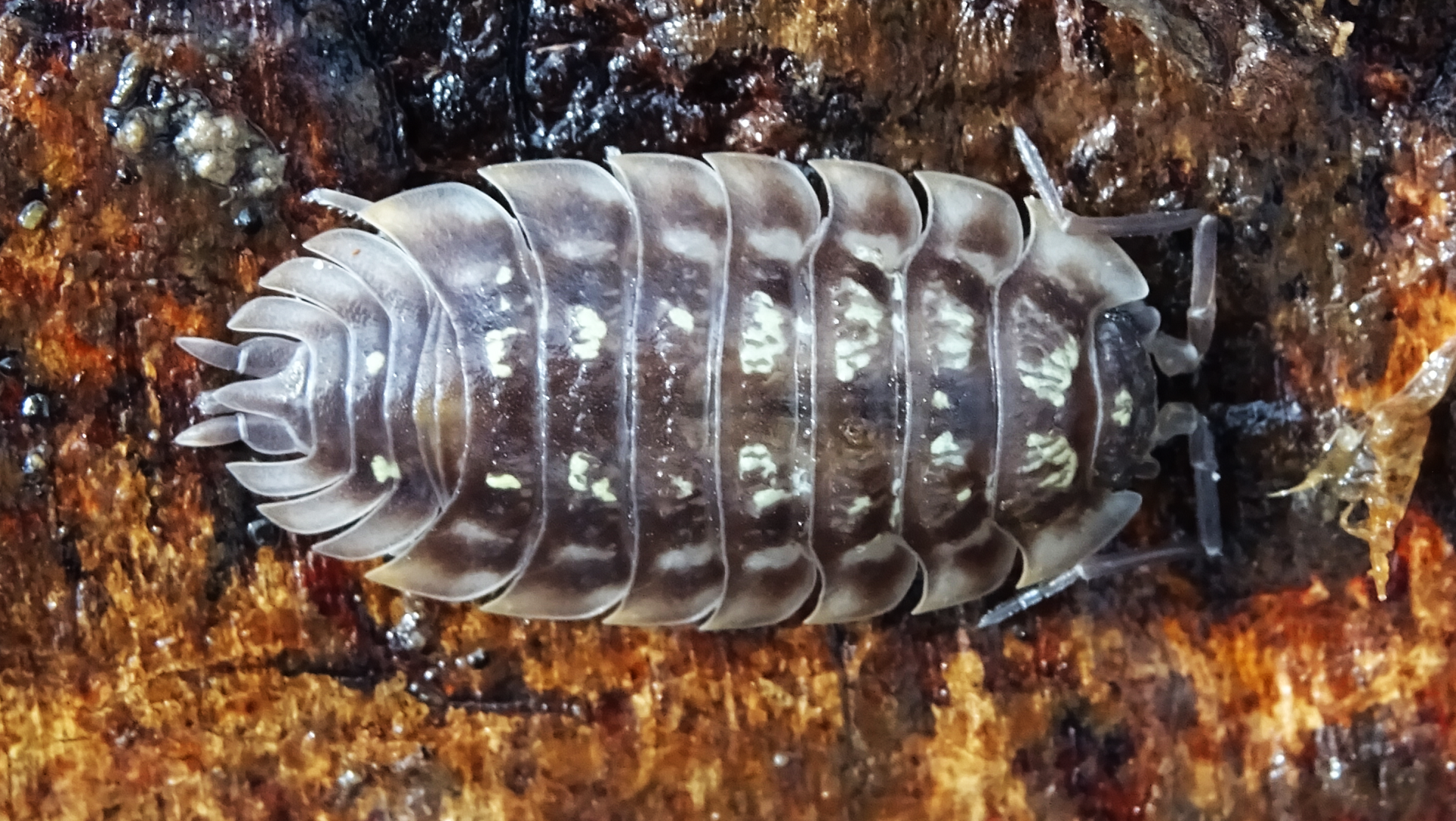
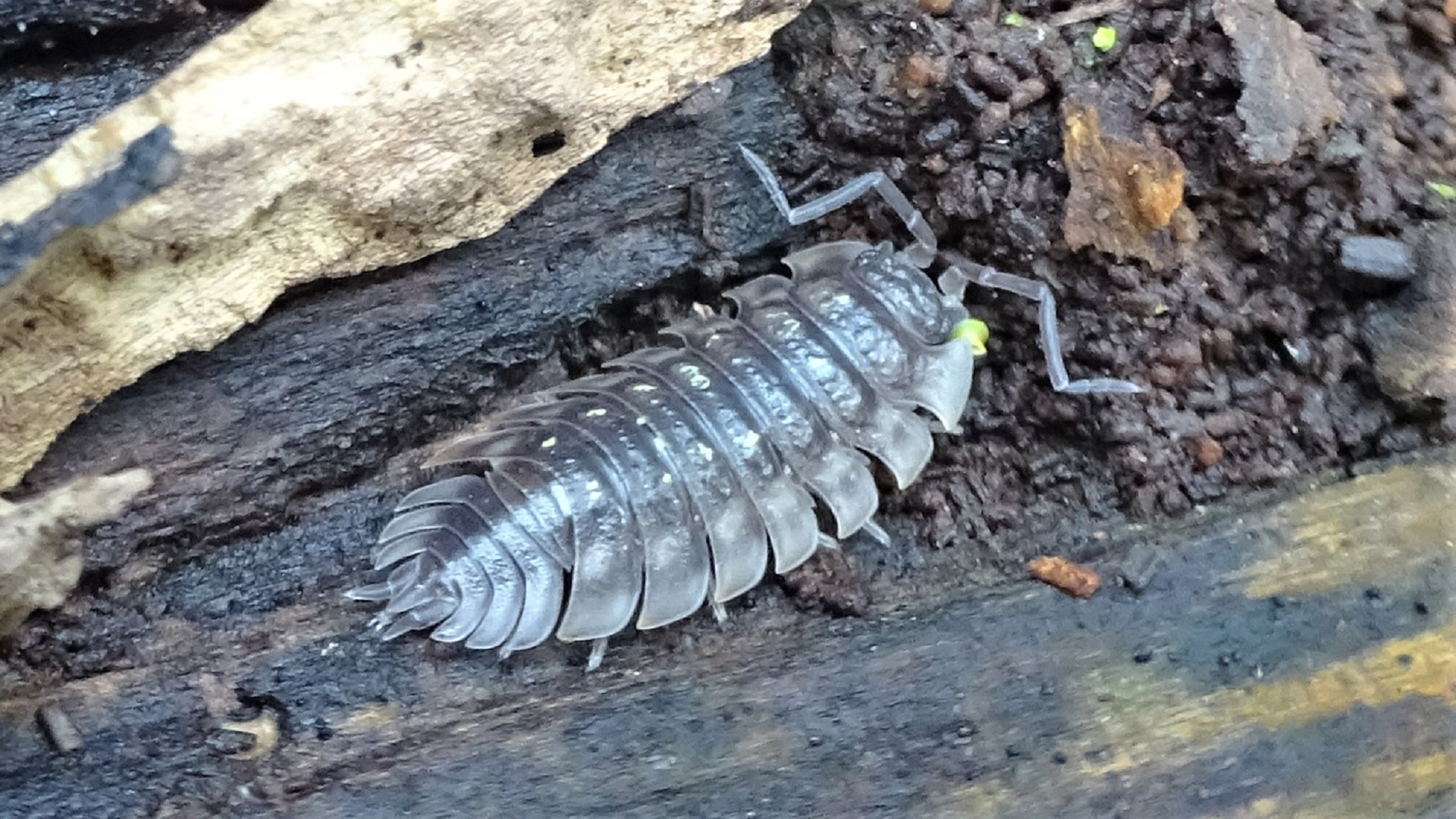
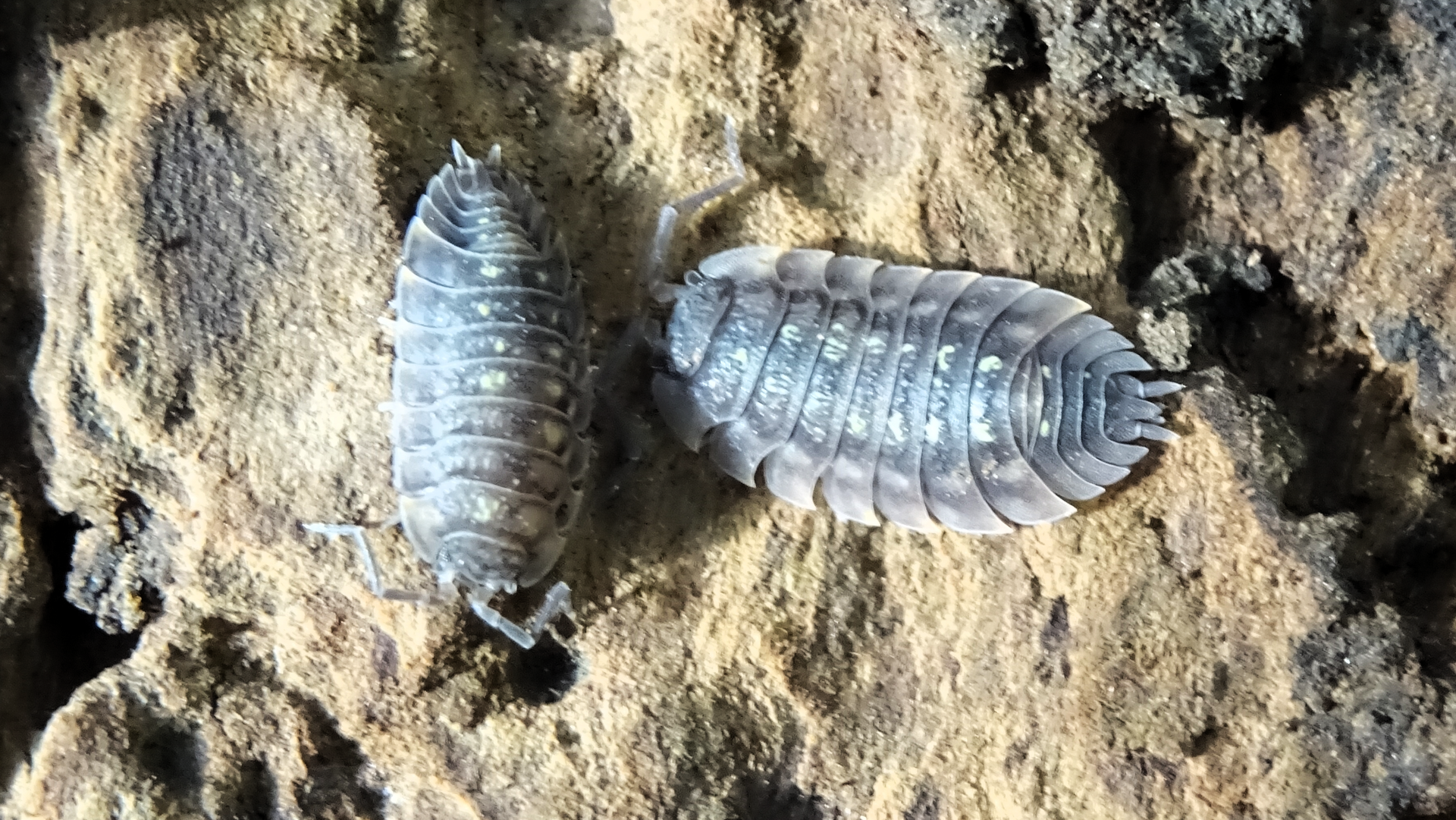
#
Common Striped Woodlouse
Philoscia muscorum
Sometimes known as the 'Fast Woodlouse' because it has the ability to run faster than many other common species when disturbed. This brownish mottled woodlouse has a dark stripe running along the back and a black head. Antennae have three flagellal segments at the tip. Its maximum length is 11mm. Normally seen from early spring to late autumn. Mating normally occurs during the night. When a female is ready to mate a male climbs on her back and licks her head while drumming against her with his front legs.
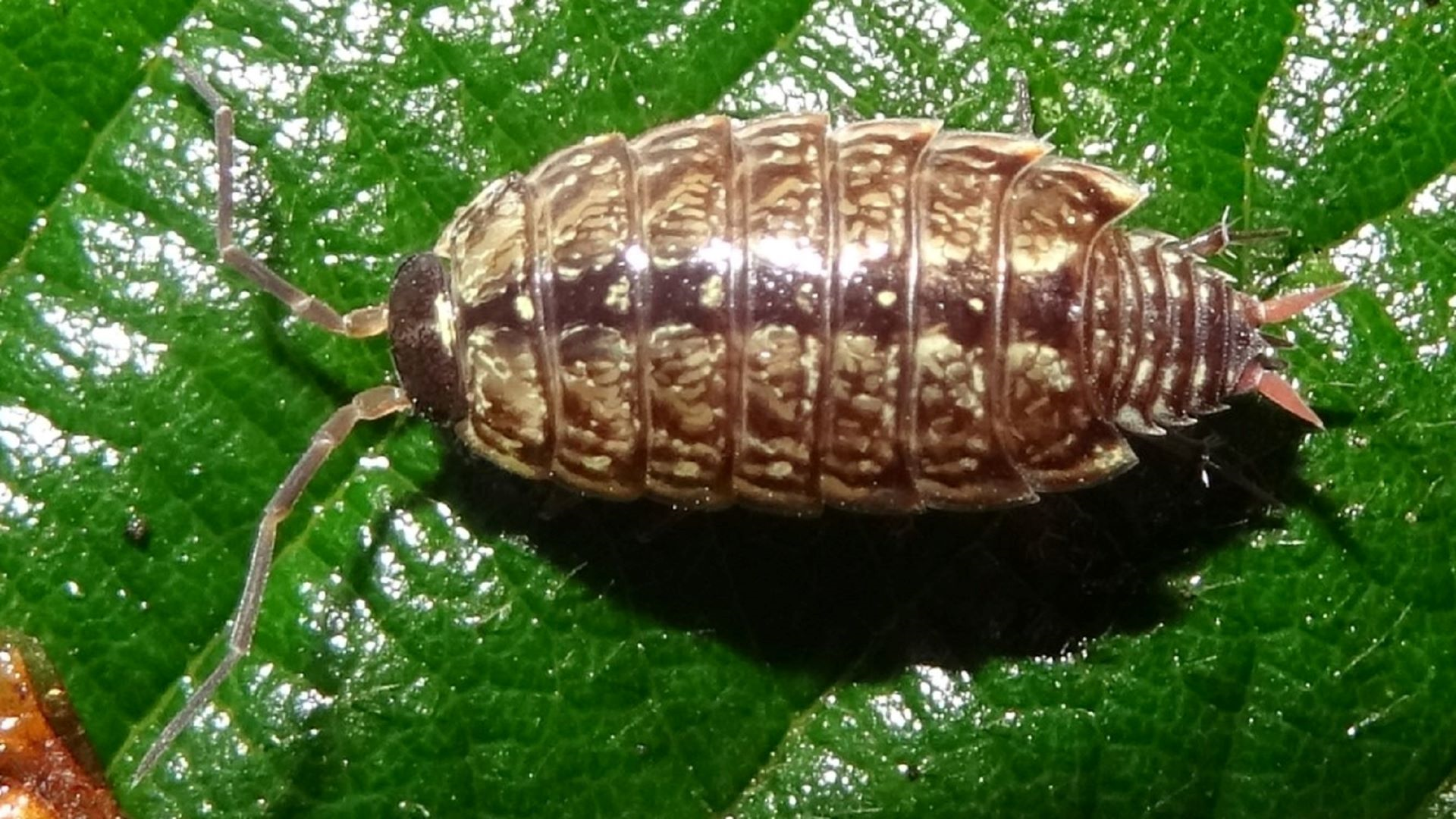
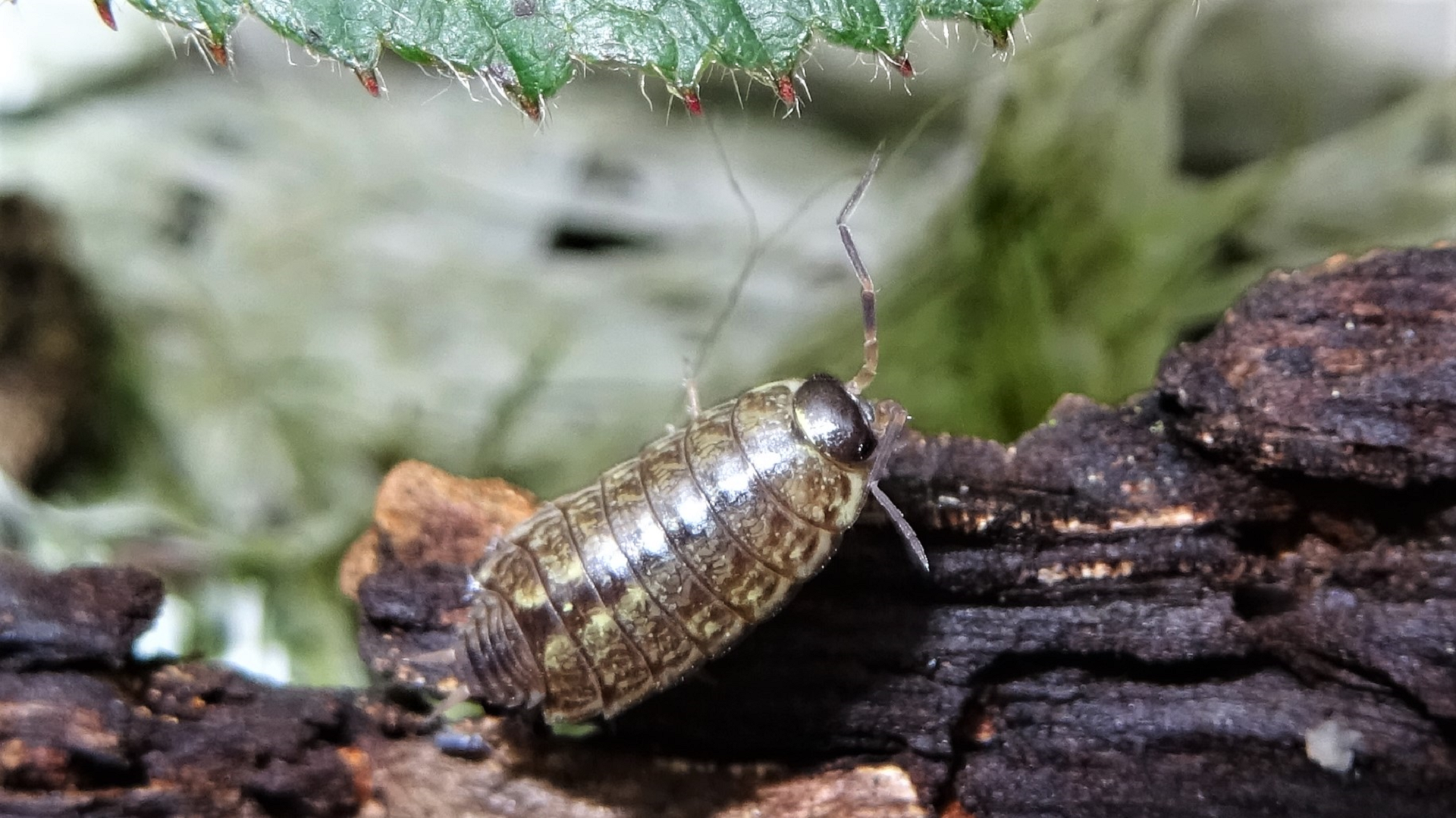
#
Common Rough Woodlouse
Porcellio scaber
This species is normally grey, oval-bodied and measuring up to 12mm long, sometimes tinged with orange, yellow or red. There are two pairs of antennae on the head, the inner pair being very small. At the rear the tiny last segment (telson) is flanked by a pair of appendages called uropods. This is a common species often found in gardens.
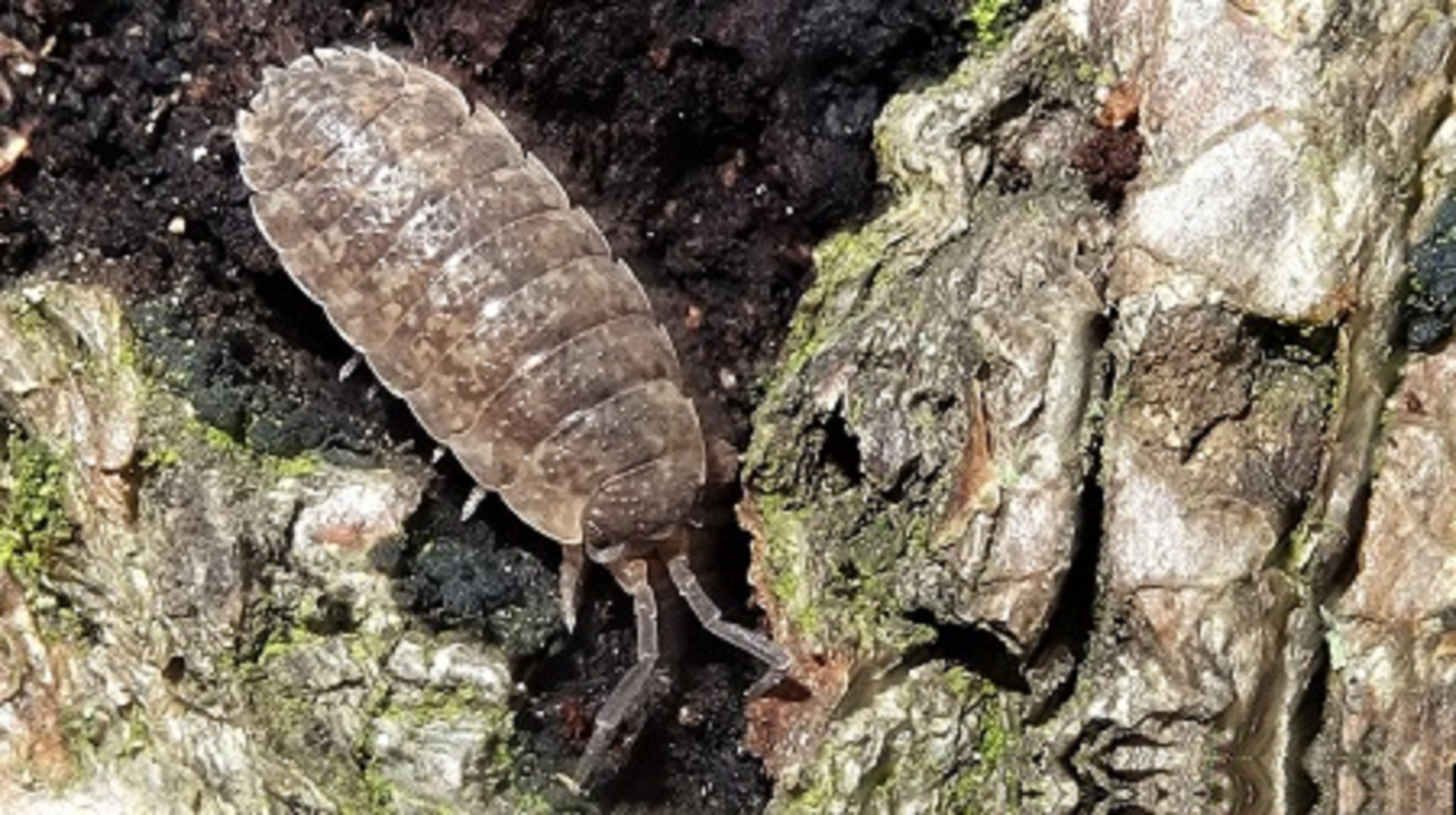
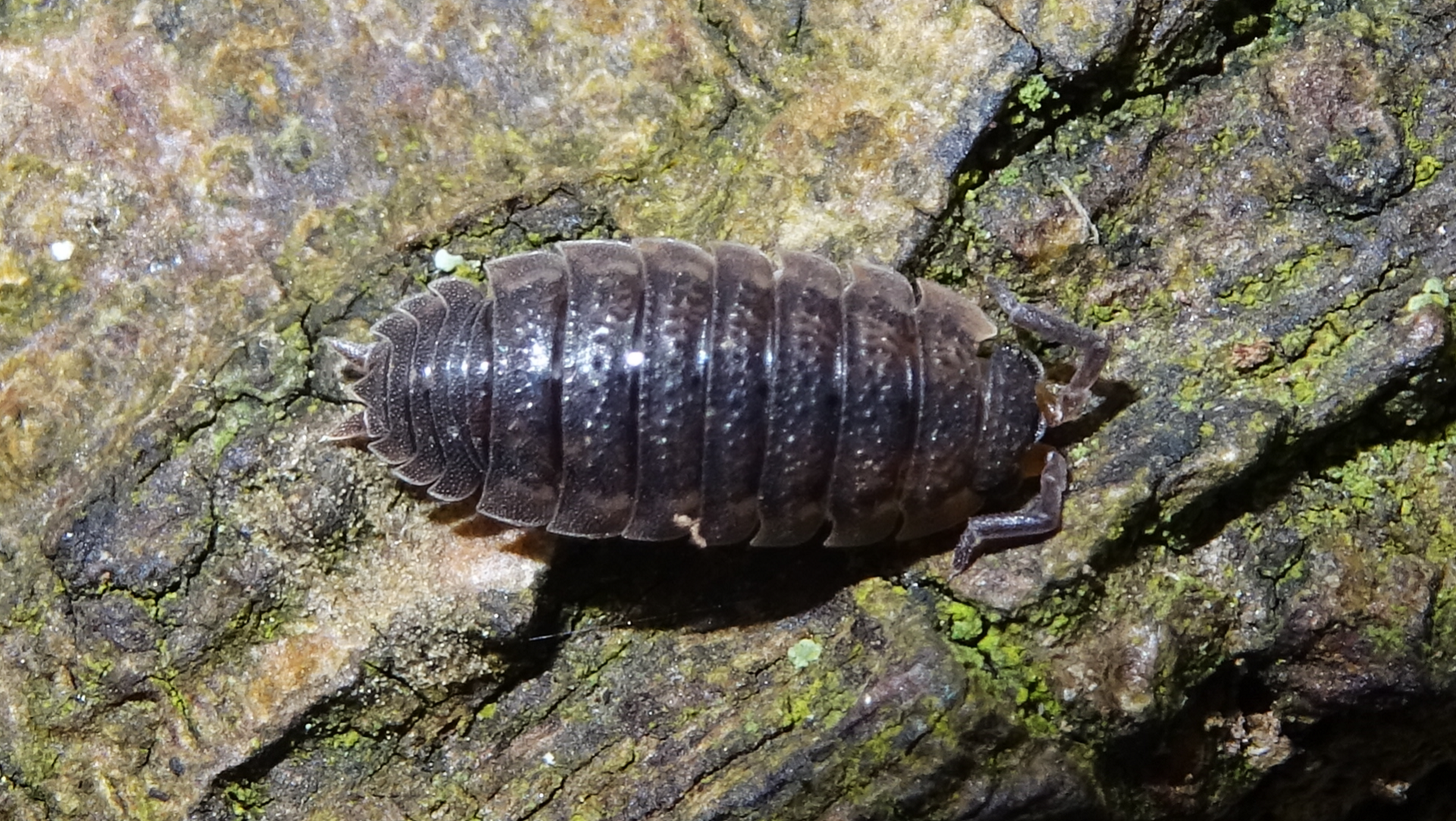
#
Common Pill Woodlouse
Armadillidium vulgare
Rolls up into a ball when disturbed. It is slate grey often with lighter patches and measures up to 18mm in length.
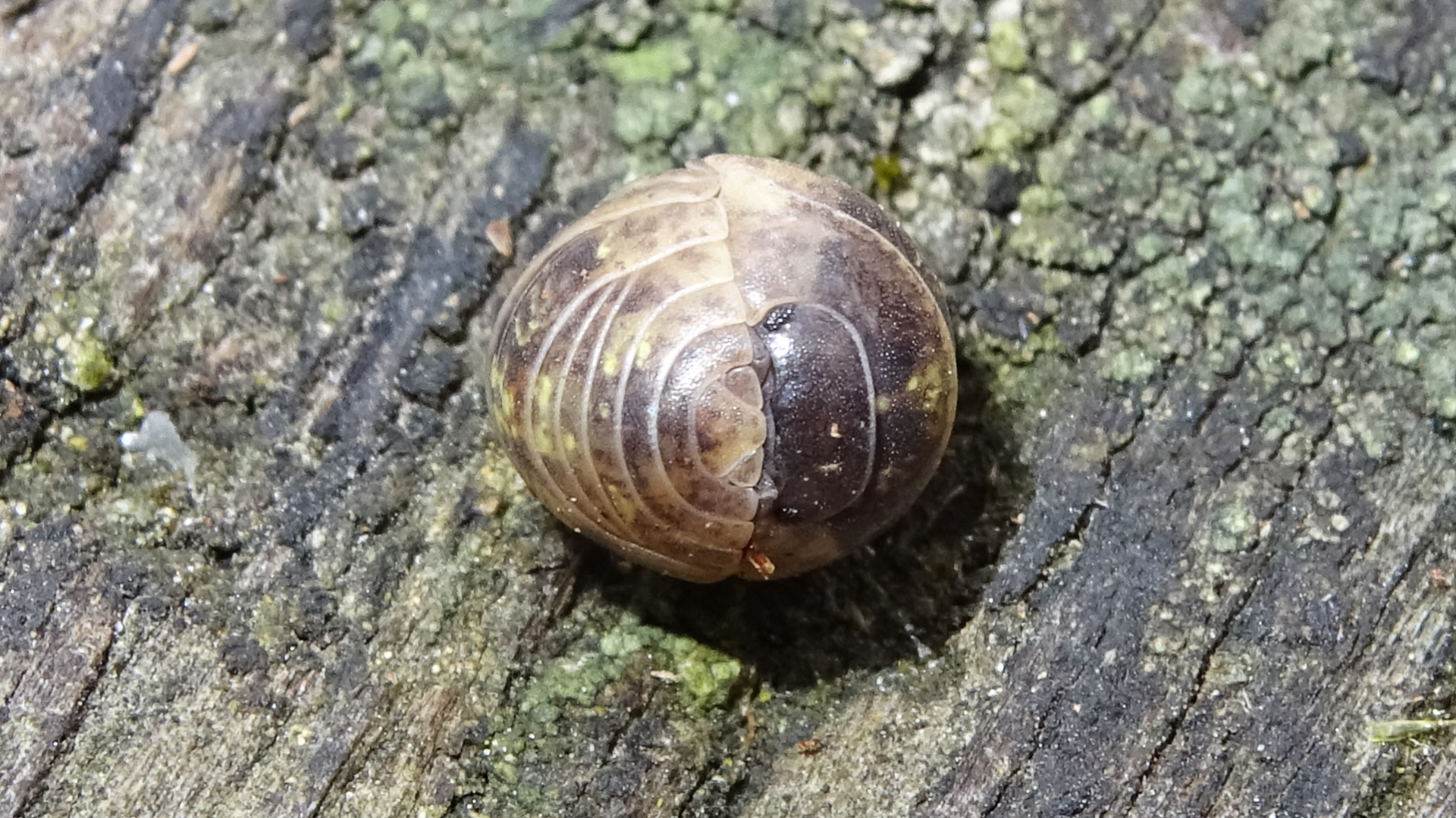
#
Nosy Pill-woodlouse
Armadillidium nasatum
Rolls up when disturbed, but does not form a perfect ball like the Common Pill Woodlouse. A main distinguishing characteristic is a rectangular-like protrusion ("nose") towards the tip of the head. It can grow to 21mm in length.
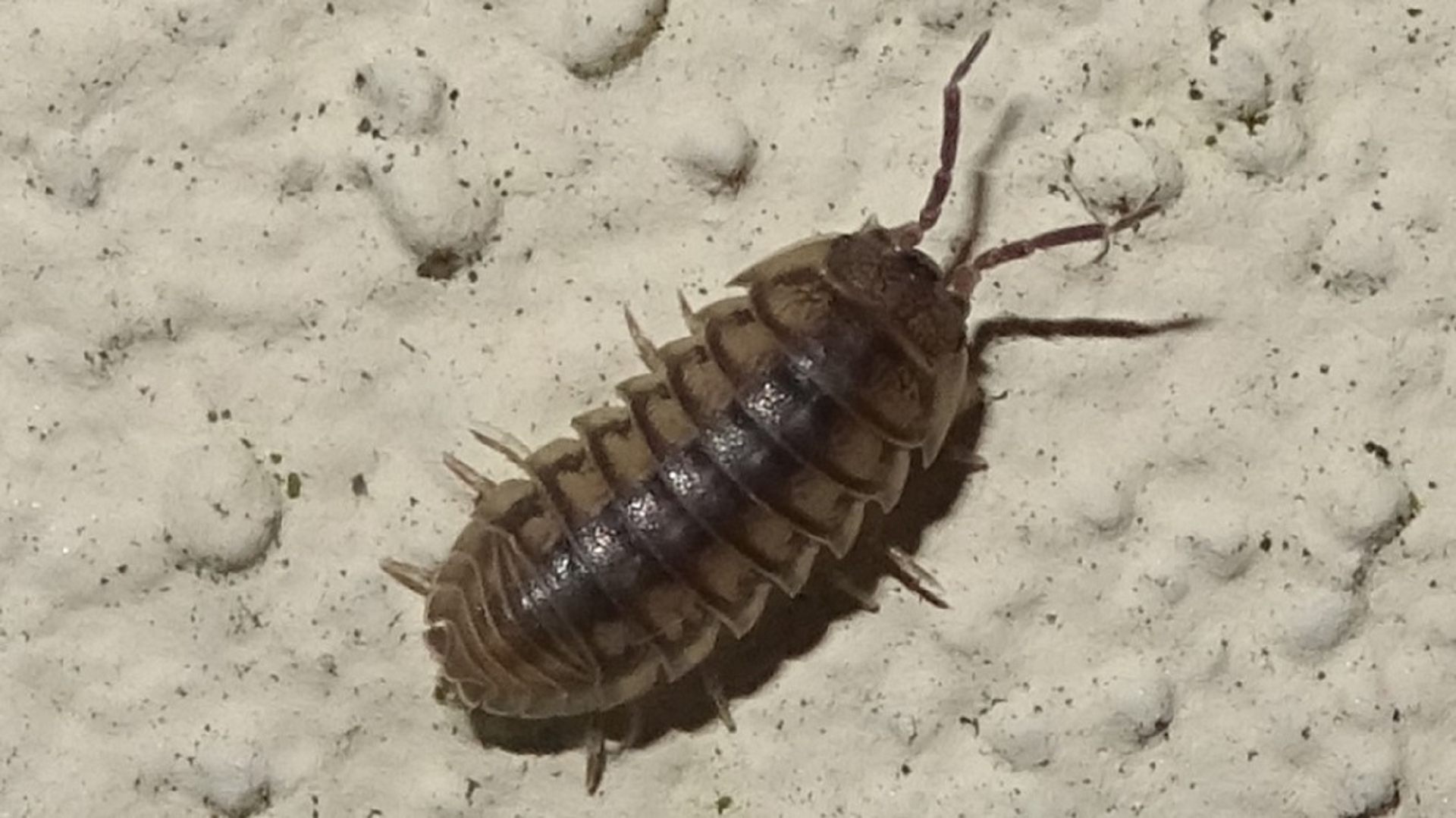
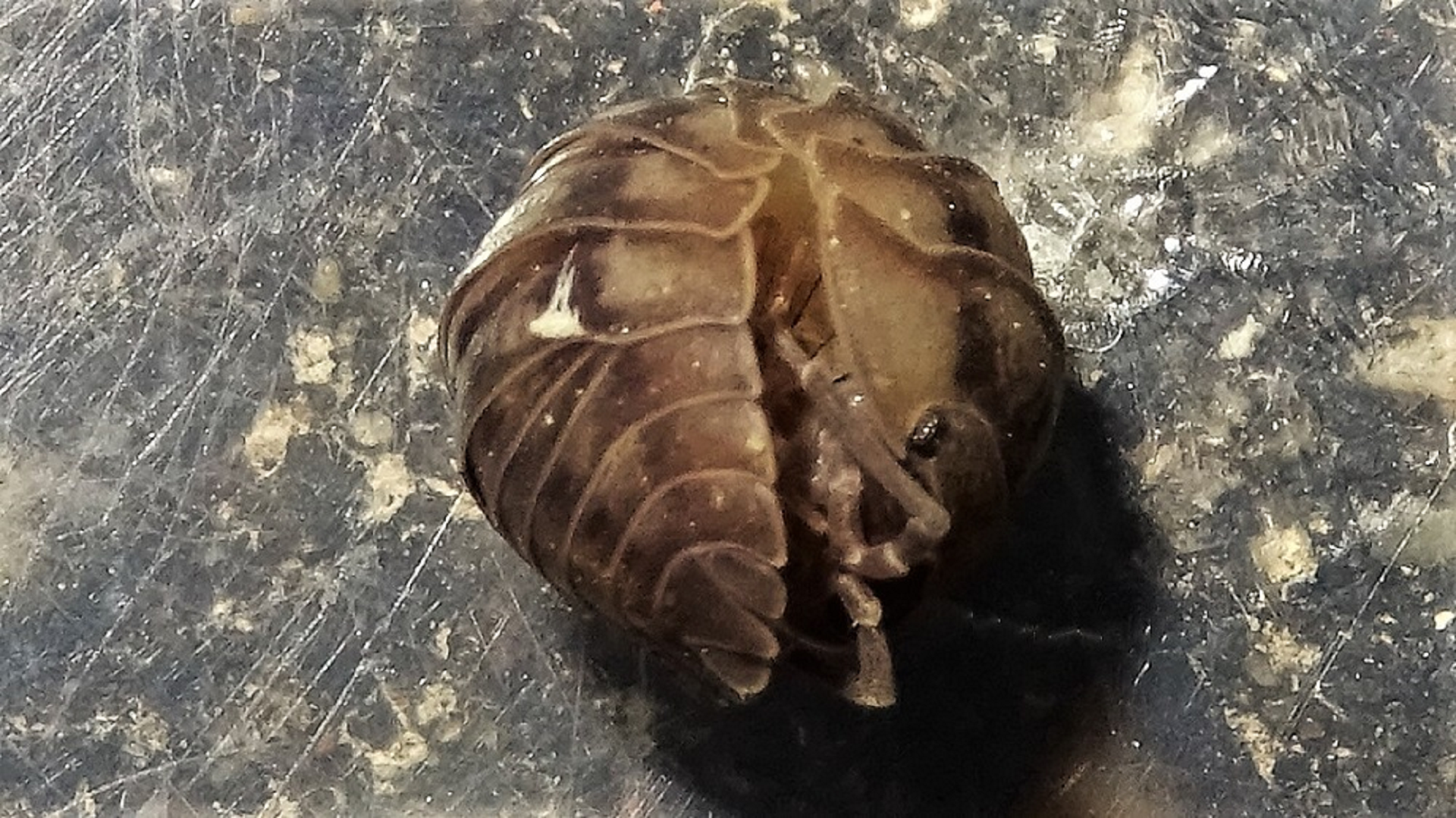
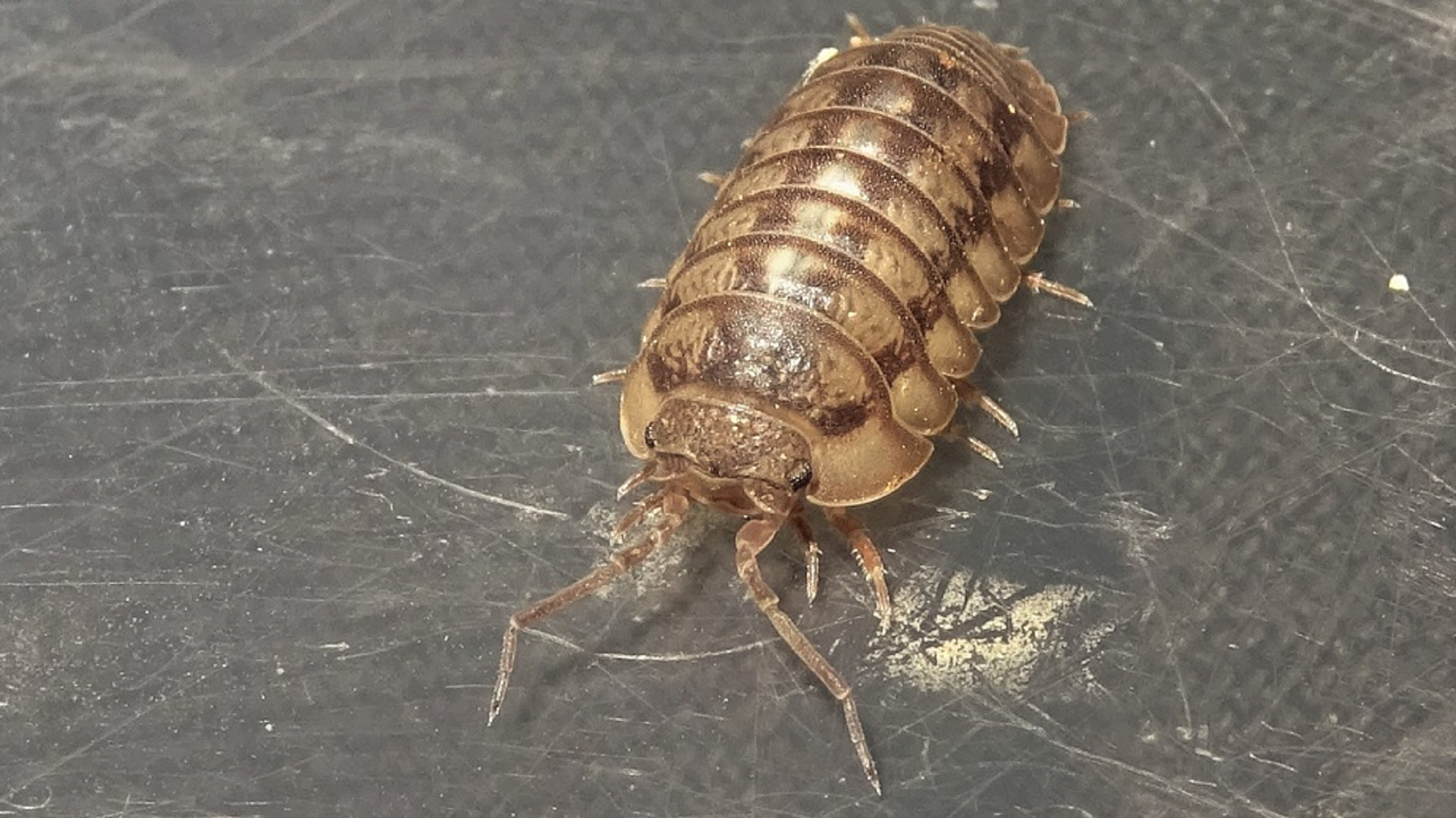
#
Two-spotted Water Hog-louse
Asellus aquaticus
A close relation to woodlice but lives it whole life in water. Poor swimmers, they normally crawl around weed and mud in stagnant water to feed on decaying organic debris. Two pale spots on the head distinguishes them from other species. Females have brood pouches underneath their body that carry eggs.
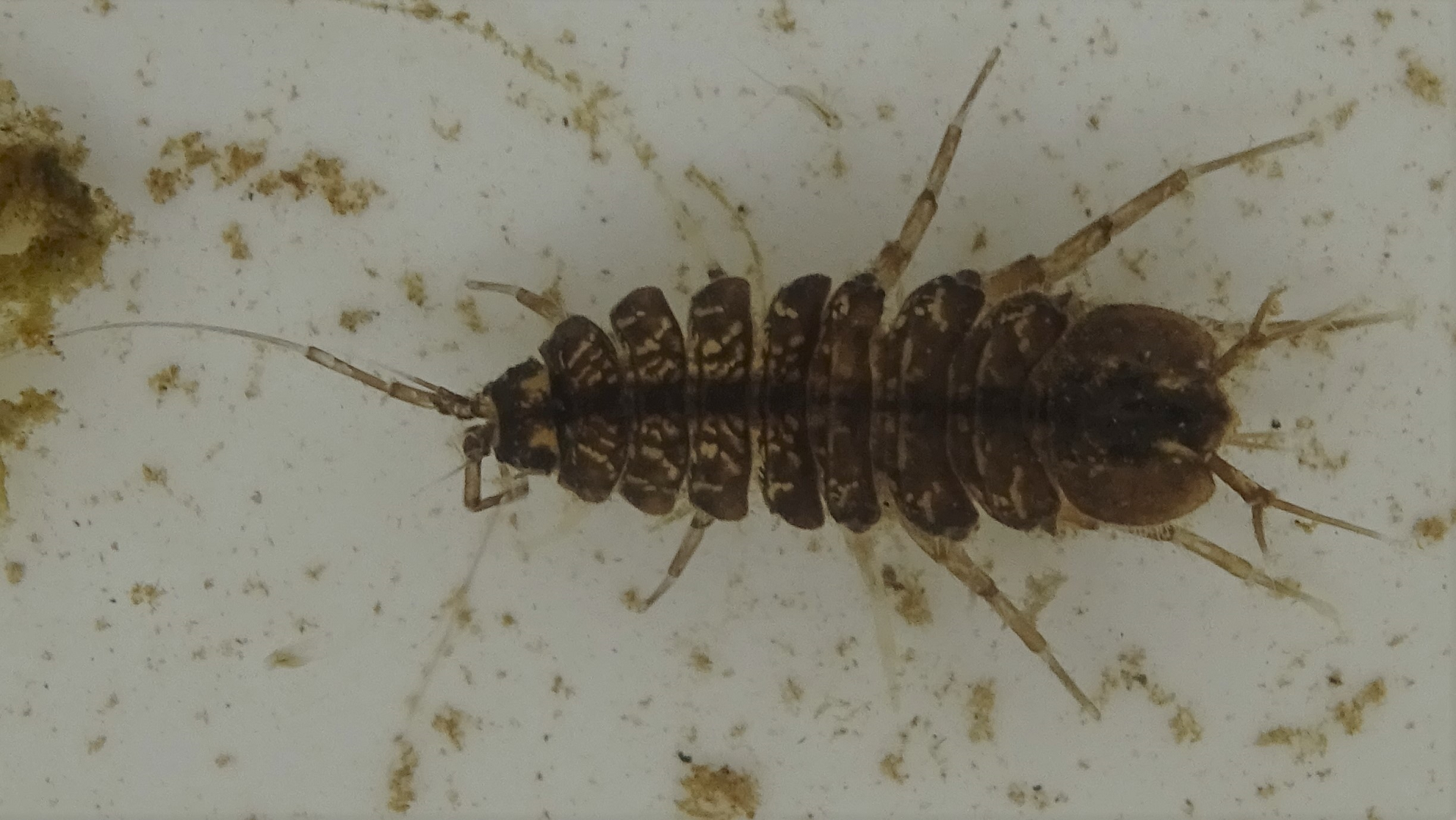
#
© hainaultforest.net. All rights reserved.


